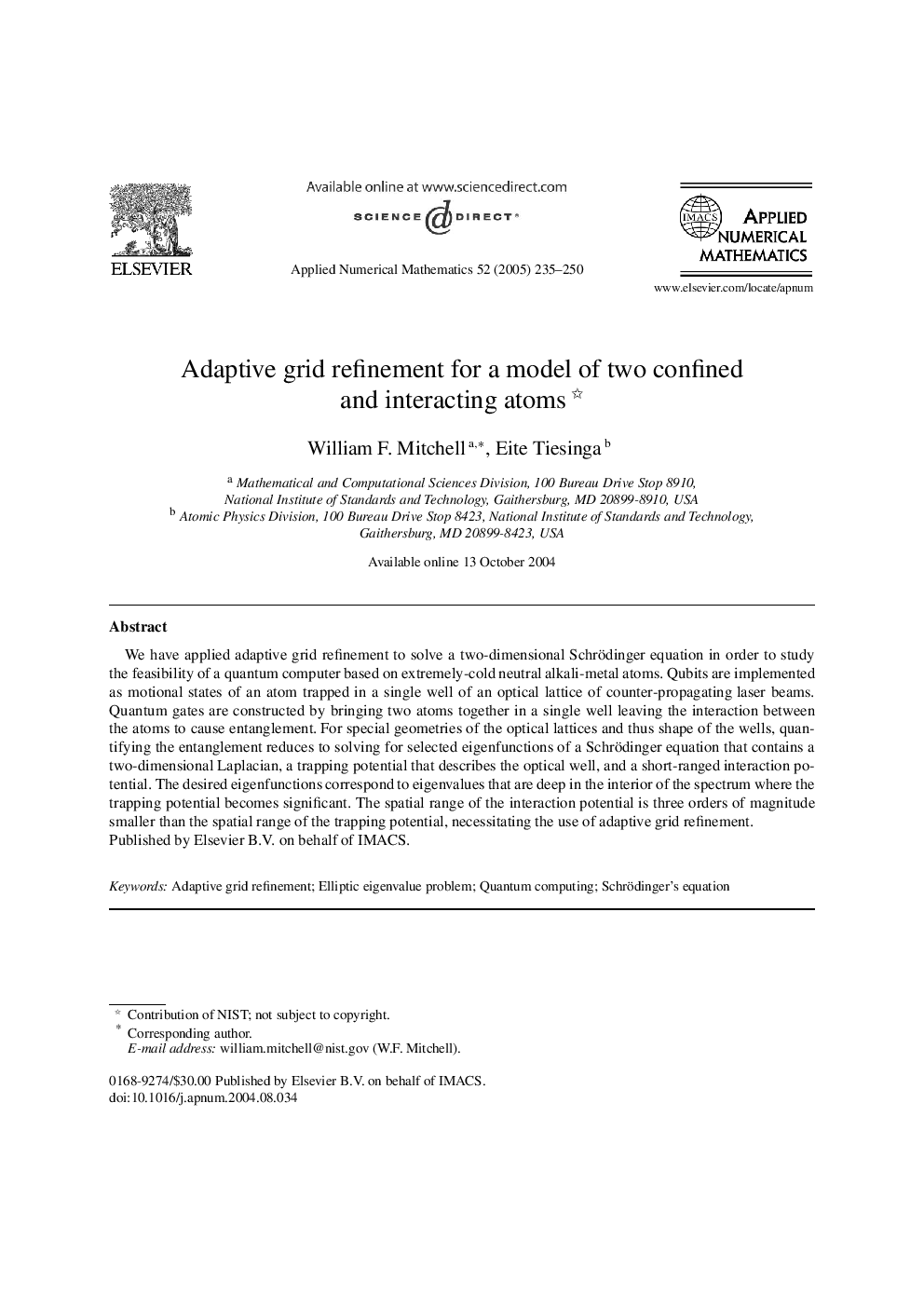| Article ID | Journal | Published Year | Pages | File Type |
|---|---|---|---|---|
| 9511876 | Applied Numerical Mathematics | 2005 | 16 Pages |
Abstract
We have applied adaptive grid refinement to solve a two-dimensional Schrödinger equation in order to study the feasibility of a quantum computer based on extremely-cold neutral alkali-metal atoms. Qubits are implemented as motional states of an atom trapped in a single well of an optical lattice of counter-propagating laser beams. Quantum gates are constructed by bringing two atoms together in a single well leaving the interaction between the atoms to cause entanglement. For special geometries of the optical lattices and thus shape of the wells, quantifying the entanglement reduces to solving for selected eigenfunctions of a Schrödinger equation that contains a two-dimensional Laplacian, a trapping potential that describes the optical well, and a short-ranged interaction potential. The desired eigenfunctions correspond to eigenvalues that are deep in the interior of the spectrum where the trapping potential becomes significant. The spatial range of the interaction potential is three orders of magnitude smaller than the spatial range of the trapping potential, necessitating the use of adaptive grid refinement.
Related Topics
Physical Sciences and Engineering
Mathematics
Computational Mathematics
Authors
William F. Mitchell, Eite Tiesinga,
